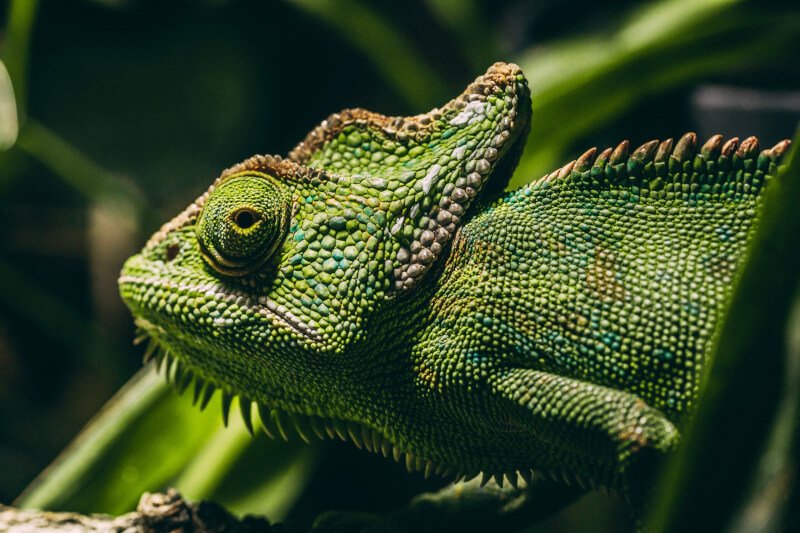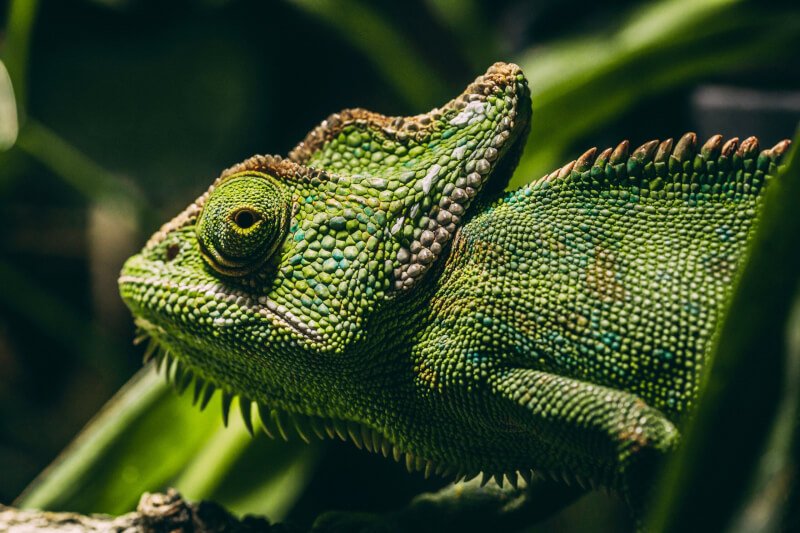If you’re a reptile owner or have a fascination with these scaly creatures, then you’re in for a treat! We’ve compiled a list of the top 10 must-read reptile books that will provide invaluable knowledge and expert advice for every reptile owner. Whether you’re a newbie or an experienced reptile enthusiast, these books cover a wide range of topics, from proper care and handling to understanding their behaviors and habitats. Get ready to immerse yourself in the fascinating world of reptiles with these captivating reads.

Reptile Care Basics
Welcome to the world of reptile care! As a new reptile owner, it’s important to familiarize yourself with the basic requirements of caring for these unique creatures. In this section, we will explore the fundamental aspects of reptile care to ensure that your reptile thrives in its new environment.
1.1 Feeding and Nutrition
Proper nutrition is essential for the health and well-being of your reptile. Different reptile species have varying dietary needs, so it’s important to research and understand the specific dietary requirements of your reptile. Some reptiles are herbivores, while others are carnivores or omnivores.
When feeding your reptile, it’s crucial to provide a balanced diet that includes a variety of foods. Commercially available reptile diets can be a convenient option, but it’s also beneficial to offer your reptile fresh fruits, vegetables, and insects. Supplementing their diet with essential nutrients, such as calcium and vitamins, is also important to prevent nutritional deficiencies.
1.2 Housing and Enclosure
Creating a suitable habitat for your reptile is essential for their overall well-being. The enclosure should be spacious enough for your reptile to move around comfortably, and it should mimic their natural habitat as closely as possible.
Consider factors such as temperature, humidity, and lighting when setting up the enclosure. Research the specific requirements of your reptile to ensure that their needs are met. Provide hiding spots, branches, and basking areas to create an environment that allows your reptile to exhibit natural behaviors.
Regular cleaning and maintenance of the enclosure is crucial to prevent the buildup of bacteria and pathogens. Provide fresh water daily, and ensure that the substrate is appropriate for your reptile’s species.
1.3 Temperature and Lighting
Reptiles are ectothermic creatures, which means they rely on external sources to regulate their body temperature. Providing a temperature gradient within the enclosure is essential for your reptile’s health and well-being.
Research the specific temperature requirements of your reptile species and provide a gradient that allows them to thermoregulate. This can be achieved by using heating lamps, heat mats, or ceramic heat emitters. Monitoring the temperature regularly with a reliable thermometer is important to ensure that it remains within the appropriate range.
In addition to temperature, lighting is also crucial for reptile health. Many reptiles require exposure to UVB light to synthesize vitamin D3, which is important for calcium absorption. Research the lighting requirements of your reptile species and provide appropriate UVB lighting to promote their overall health.
1.4 Handling and Socialization
Handling and socialization play a crucial role in bonding with your reptile and building trust. However, it’s important to consider the natural behaviors and preferences of your reptile when handling them.
Some reptiles may not enjoy frequent handling or may become stressed by it. It’s important to observe their body language and respect their boundaries. Start by slowly introducing your reptile to handling in short sessions, gradually increasing the duration over time.
Remember to wash your hands before and after handling your reptile to prevent the spread of bacteria or parasites. Avoid handling them immediately after feeding to reduce the risk of regurgitation.
Understanding Reptile Behavior
To effectively care for your reptile, it’s essential to understand their behavior and communication. In this section, we will explore the natural behaviors of reptiles, how they communicate, and how to provide environmental enrichment for their overall well-being.
2.1 Natural Behaviors
Reptiles exhibit a wide range of natural behaviors, and understanding these behaviors will help you provide an environment that promotes their physical and mental health. Some common natural behaviors include basking, hunting, burrowing, and breeding.
Observing your reptile’s natural behaviors not only allows you to better understand their needs but also gives you the opportunity to ensure that their enclosure is properly designed to accommodate these behaviors. Providing appropriate hiding spots, climbing areas, and opportunities for exploration will contribute to the overall well-being of your reptile.
2.2 Communication and Signaling
While reptiles may not communicate in the same way as mammals, they still exhibit various forms of communication and signaling. Reptiles use body language, vocalizations, and chemical signals to convey information to others of their species.
Understanding your reptile’s communication signals can help you interpret their needs and emotions. For example, certain behaviors like head bobbing or tail flicking may indicate aggression or stress, while others like tail wagging or tail raising might signal curiosity or excitement.
2.3 Environmental Enrichment
Providing environmental enrichment is crucial for the mental stimulation and overall well-being of your reptile. Reptiles in captivity may not have access to the same environmental stimuli as their wild counterparts, so it’s important to create an enriched environment within their enclosure.
Enrichment can involve the addition of hiding spots, climbing areas, and puzzle feeders to encourage natural behaviors and mental stimulation. Providing opportunities for foraging, exploring, and interacting with their environment can help prevent boredom and promote their overall well-being.
2.4 Common Behavioral Issues
Reptiles, like any other pet, can sometimes develop behavioral issues. These issues may manifest as aggression, avoidance behaviors, or changes in appetite or activity level. It’s important to address these issues promptly to ensure the well-being of your reptile.
Common causes of behavioral issues in reptiles include improper husbandry, inadequate environmental enrichment, and health problems. If you notice any changes in your reptile’s behavior, consult with a reptile veterinarian or an experienced reptile keeper for guidance on how to address the issue.

Choosing the Right Reptile
Choosing a reptile to bring into your home is an exciting decision, but it’s essential to make an informed choice that matches your preferences and capabilities. In this section, we will explore the factors to consider when selecting a reptile as a pet.
3.1 Researching Different Species
Before deciding on a reptile, it’s important to research different species to find one that aligns with your lifestyle, capabilities, and interests. Consider factors such as size, lifespan, diet, and specific care requirements.
Different reptile species have different needs, and it’s crucial to ensure that you can meet those needs before bringing a reptile into your home. Some species may require more specialized care or have specific habitat requirements that might not be suitable for your living situation.
3.2 Assessing Personal Preferences and Capabilities
Reptiles come in a wide variety of shapes, sizes, and temperaments. Assessing your personal preferences and capabilities will help you determine which reptile species is the right fit for you.
Consider factors such as the level of interaction you desire, handling preferences, activity level, and maintenance requirements. Some reptiles may require more handling and social interaction, while others may prefer a more hands-off approach.
Be honest with yourself about your comfort level with different reptile species and their specific care requirements. Choosing a reptile that aligns with your capabilities and preferences will ensure a better experience for both you and your new pet.
3.3 Considering Space and Budget
Reptiles require appropriate enclosures that accommodate their size, activity level, and specific environmental needs. Consider the space available in your home and ensure that you can provide an enclosure that meets the requirements of the reptile species you are considering.
Additionally, reptiles have varying cost requirements in terms of housing, food, lighting, and veterinary care. Consider your budget and ensure that you can provide for the ongoing needs of the reptile you choose.
3.4 Finding Reputable Breeders or Rescues
Once you have identified the reptile species that suits your preferences and capabilities, it’s important to find a reputable breeder or rescue from which to obtain your reptile. Reputable sources will ensure that the reptile you bring home is healthy, well-cared for, and ethically sourced.
Do thorough research on potential breeders or rescues, and look for reviews and recommendations from other reptile owners. Ask questions about the reptile’s origin, health history, and any specific care requirements they may have.
Reputable breeders or rescues will provide you with the necessary information and support to ensure a successful transition for the reptile into their new home.
Reptile Health and Wellness
Ensuring the health and wellness of your reptile is of utmost importance. In this section, we will explore the key aspects of reptile health, common health issues to watch for, recognizing signs of stress or illness, and emergency preparedness.
4.1 Regular Veterinary Care
Just like any other pet, reptiles require regular veterinary care to maintain their health and well-being. Find an experienced reptile veterinarian who can provide routine check-ups, vaccinations if required, and guidance on any health concerns.
Regular veterinary visits are essential for early detection of any health issues, as reptiles can often mask signs of illness until they become severe. Your veterinarian will also provide guidance on proper nutrition, habitat maintenance, and any necessary diagnostic tests.
4.2 Common Health Issues
Reptiles can be prone to certain health issues, and being aware of these issues will help you provide the appropriate care and seek prompt veterinary attention when needed. Some common health issues in reptiles include respiratory infections, metabolic bone disease, parasites, and mouth or shell infections.
Be vigilant in observing your reptile for any changes in behavior, appetite, or appearance. Unexplained weight loss, lethargy, changes in skin color or texture, and abnormal discharge are all potential signs of a health issue.
If you notice any concerning symptoms or behaviors, consult with your reptile veterinarian for further evaluation and treatment options.
4.3 Recognizing Signs of Stress or Illness
Reptiles, like all animals, can experience stress or illness, and it’s important to be able to recognize the signs. Stress or illness can manifest in various ways, including changes in behavior, appetite, appearance, or activity level.
Some common signs of stress or illness in reptiles include decreased appetite, weight loss, excessive hiding, changes in stool consistency, respiratory difficulties, skin lesions, or lethargy.
If you notice any concerning signs, it’s important to consult with a reptile veterinarian to determine the underlying cause and appropriate course of action. Early intervention is crucial for successful treatment and recovery.
4.4 First Aid and Emergency Preparedness
Being prepared for emergencies is essential when caring for any pet, including reptiles. Familiarize yourself with basic first aid techniques for reptiles, such as how to control bleeding, administer medications, or perform basic wound care.
It’s also important to have an emergency kit on hand with essential supplies, such as a reptile safe disinfectant, spare heat sources, reptile-safe wound dressings, and a reptile-safe thermometer.
Research emergency veterinary clinics in your area that have experience with reptiles and keep their contact information readily accessible.
By being prepared and having the necessary knowledge and supplies, you can provide timely care in emergency situations and increase the chances of a positive outcome for your reptile.

Handling and Interaction
Interacting and bonding with your reptile can be a rewarding experience. In this section, we will explore safe handling techniques, building trust and bonding with your reptile, enriching social interactions, and setting boundaries and limits.
5.1 Safe Handling Techniques
Handling your reptile safely is crucial for both your safety and the well-being of your reptile. Different reptile species have different temperaments and handling requirements, so it’s important to research and understand the specific needs of your reptile.
Approach your reptile calmly and confidently, and always support their body when handling them. Avoid grabbing or squeezing them tightly, as this can cause stress or injury. Wash your hands before and after handling your reptile to prevent the spread of bacteria.
5.2 Bonding and Trust Building
Building trust and bonding with your reptile takes time and patience. Start by allowing your reptile to acclimate to their new environment before attempting any handling. Observe their behavior and body language to gauge their comfort level with you.
Regular, gentle handling sessions can help your reptile become more comfortable and trusting of you. Offer treats or rewards during handling to create positive associations. Avoid sudden movements or loud noises that may startle or stress your reptile.
Remember that each reptile is an individual, and some may never be comfortable with frequent handling. Respect their boundaries and preferences, and focus on building trust at their own pace.
5.3 Enriching Social Interactions
Interacting with your reptile goes beyond just handling. Providing social interactions through play, enrichment activities, and training can contribute to their overall well-being.
Research appropriate enrichment activities for your reptile species, such as puzzle feeders, foraging opportunities, or interactive toys. Engage with your reptile using gentle, non-threatening gestures and avoid overstimulation or stress.
Training can also be a way to enhance social interactions with your reptile. Some reptiles can be trained to respond to simple commands or target training. Training sessions provide mental stimulation for your reptile and strengthen the bond between you.
5.4 Setting Boundaries and Limits
While social interactions are important, it’s equally important to set boundaries and limits for your reptile. Remember that reptiles are not domesticated animals like dogs or cats, and they have their own unique behaviors and needs.
Avoid overstimulating your reptile or forcing them into situations that make them uncomfortable. Remember that they may need time alone or in their enclosure to rest and recharge.
It’s essential to strike a balance between social interactions and allowing your reptile to have their own space and time. Respect their preferences and boundaries and ensure that you provide them with opportunities to retreat and feel safe.
Reptile-Specific Knowledge
Understanding the unique anatomy, physiology, reproduction, and conservation aspects of reptiles is important for their overall care and well-being. In this section, we will delve into reptile-specific knowledge to enhance your understanding of these fascinating creatures.
6.1 Anatomy and Physiology
Reptiles have unique anatomical and physiological features that contribute to their survival and adaptability. Understanding their anatomy and physiology will help you better comprehend their specific care requirements and health considerations.
Research the basic anatomy of your reptile species, including their skeletal structure, respiratory system, and reproductive organs. Familiarize yourself with their life stages and any specific considerations related to growth and development.
6.2 Reproduction and Breeding
Reproduction in reptiles varies significantly between species and often involves fascinating adaptations. Understanding the reproductive biology of your reptile species is essential for their overall care and if you are considering breeding.
Research the reproductive behaviors, breeding seasons, and incubation requirements specific to your reptile species. Ensure that you have a thorough understanding of the potential risks and responsibilities associated with breeding reptiles.
6.3 Genetics and Morphology
The study of reptile genetics and morphology is a complex and fascinating field. This knowledge can be valuable for understanding the inheritance of physical traits, potential genetic disorders, and breeding practices.
If you are considering breeding reptiles, it’s important to research and understand the genetic principles associated with your reptile species. This will help you make informed breeding decisions, identify potential health issues, and promote responsible breeding practices.
6.4 Conservation and Legal Considerations
Conservation efforts and legal considerations play a crucial role in reptile ownership. Many reptile species are protected due to their declining populations or endangered status. It’s important to be aware of legal restrictions and regulations regarding the ownership, trade, and transport of reptiles.
Research your local laws and regulations concerning reptile ownership. Understand the importance of conservation efforts and how you can contribute to preserving reptile populations and their natural habitats.
Supporting reputable breeders and participating in conservation initiatives are ways to show responsible ownership and contribute to the preservation of reptile species.

Advanced Reptile Husbandry
For experienced reptile keepers, advanced husbandry techniques can provide additional challenges and opportunities to enhance the care of their reptiles. In this section, we will explore specialized enclosure design, customized diets and nutrition, breeding and hatchling care, and addressing complex health issues.
7.1 Specialized Enclosure Design
Advanced reptile husbandry often involves creating specialized enclosures that cater to the specific needs of the reptile species. Research advanced enclosure design techniques, such as bioactive setups or naturalistic vivariums, that aim to create self-sustaining ecosystems within the enclosure.
Consider advanced heating and lighting setups, ventilation systems, and water filtration methods to provide optimal conditions for your reptile’s health and well-being. Consult with experienced reptile keepers or herpetologists for guidance on advanced enclosure design techniques.
7.2 Customized Diets and Nutrition
As you gain experience in reptile care, you may choose to customize your reptile’s diet to better meet their specific nutritional needs. Consult with reptile nutritionists or experienced reptile keepers to determine the best diet plan for your reptile species.
Consider factors such as prey size, nutrient ratios, and vitamin and mineral supplementation. Research gut loading and dusting techniques to optimize the nutritional value of prey items.
Remember that each reptile species has its own unique dietary requirements, so it’s crucial to tailor their diet accordingly to promote their overall health and vitality.
7.3 Breeding and Hatchling Care
Breeding reptiles can be a complex and rewarding endeavor for experienced keepers. However, it requires a deep understanding of the reproductive biology, breeding seasons, and incubation requirements specific to the reptile species.
Research the intricacies of breeding your chosen reptile species, including courtship behaviors, egg-laying or live birth processes, and incubation techniques. Ensure that you have the necessary infrastructure and resources to care for the hatchlings and find appropriate homes for them.
Breeding reptiles requires careful planning, attention to detail, and a commitment to responsible breeding practices. Consult with experienced reptile breeders or herpetologists for guidance and support throughout the breeding process.
7.4 Addressing Complex Health Issues
Experienced reptile keepers may encounter complex health issues that require specialized knowledge and resources. These issues can be challenging to diagnose and treat, and it’s important to consult with a reptile veterinarian who has experience with complex health cases.
Common complex health issues in reptiles include metabolic bone disease, respiratory infections, organ failure, and reproductive disorders. These conditions may require advanced diagnostic tests, specialized treatments, and ongoing care.
Be proactive in seeking veterinary attention if you notice any concerning symptoms or behaviors. Early intervention and appropriate treatment are crucial for increasing the chances of a positive outcome for your reptile.
Reptile Photography and Art
Reptiles, with their unique colors, patterns, and textures, provide wonderful subjects for photography and art. In this section, we will explore techniques for capturing stunning reptile portraits, lighting and equipment tips, exploring reptile art mediums, and showcasing reptile beauty in creative ways.
8.1 Capturing Stunning Reptile Portraits
Photographing reptiles can be a captivating endeavor, allowing you to showcase their beauty and unique features. Research techniques for capturing stunning reptile portraits, such as close-up shots that highlight intricate patterns or eye-catching compositions.
Consider factors such as lighting, background, and positioning to create visually striking images. Experiment with different angles, perspectives, and focal lengths to capture the essence of your reptile’s personality.
8.2 Lighting and Equipment Tips
Good lighting is crucial for reptile photography and can greatly enhance the overall quality of your images. Research lighting techniques specific to reptile photography, such as using natural light or artificial lighting setups to achieve the desired effect.
Invest in quality equipment, such as a DSLR camera and a variety of lenses, to optimize your reptile photography. Research the technical aspects of photography, such as aperture, shutter speed, and ISO, to fully utilize your equipment and achieve the desired results.
8.3 Exploring Reptile Art Mediums
Reptiles inspire creativity, and exploring different art mediums can be a wonderful way to showcase their beauty. Consider exploring mediums such as painting, drawing, sculpture, or digital art to capture the essence of reptiles in your artwork.
Experiment with different styles, techniques, and materials to find your unique artistic voice. Research reptile art communities or exhibitions to find inspiration and connect with other reptile art enthusiasts.
8.4 Showcasing Reptile Beauty in Creative Ways
Reptiles offer a wide range of creative possibilities for showcasing their beauty. Consider creating photo albums, art prints, or digital portfolios to share your reptile photography or artwork with others.
Take advantage of social media platforms or online reptile communities to showcase and share your reptile-related creativity. Participating in reptile-themed contests or exhibitions can also provide opportunities to gain recognition and connect with fellow reptile enthusiasts.
Showcasing the beauty of reptiles through photography or art can help raise awareness and appreciation for these incredible creatures.

Reptiles in the Wild
Understanding reptiles in their natural habitat is essential for appreciating their ecological role and the challenges they face. In this section, we will explore studying natural habitats, conservation efforts and threats, field guides, and observational techniques, as well as the ecological impact of reptiles.
9.1 Studying Natural Habitats
Studying reptiles in their natural habitats provides valuable insights into their behavior, habitat preferences, and ecological interactions. Consider exploring reptile-rich areas, such as national parks or protected reserves, to observe reptiles in their natural environment.
Research various reptile species within the habitat and learn about their specific adaptations and ecological roles. Observe their natural behaviors, feeding habits, and interactions with other species to gain a deeper appreciation for their role in the ecosystem.
9.2 Conservation Efforts and Threats
Reptiles, like many other wildlife species, face various threats to their survival and well-being. Understanding these threats is crucial for supporting conservation efforts and making informed choices as a reptile owner.
Research the common threats to reptile populations, such as habitat loss, pollution, climate change, and illegal wildlife trade. Educate yourself on the conservation organizations and initiatives dedicated to protecting reptiles and their habitats.
Contribute to conservation efforts by supporting reputable organizations, participating in citizen science projects, or spreading awareness about reptile conservation.
9.3 Field Guides and Observational Techniques
Field guides are invaluable tools for studying reptiles in the wild. These guides provide detailed information about reptile species, including identification features, habitat preferences, and behavioral observations.
Invest in reputable field guides specific to your region or the reptile species you are interested in. Familiarize yourself with the key features to look for when observing reptiles in the wild, such as scale patterns, coloration, or behavioral cues.
Develop observational techniques, such as patient waiting or tracking, to increase your chances of encountering and observing reptiles in their natural habitat. Remember to prioritize the well-being of the reptiles and respect their space and natural behaviors.
9.4 Ecological Impact of Reptiles
Reptiles play vital roles in their ecosystems, contributing to the balance of populations, nutrient cycling, and pest control. Understanding their ecological impact is key to appreciating their ecological importance and advocating for their conservation.
Research the ecological interactions of reptiles within their habitats, such as their role as predators or prey, seed dispersers, or agents of pollination. Explore the scientific literature or consult with ecologists for a deeper understanding of reptile ecology.
Contribute to citizen science projects that monitor reptile populations or ecological interactions. Educate others about the ecological importance of reptiles and the need for their conservation.
Reptile Ownership and Responsibilities
Owning a reptile comes with various responsibilities and ethical considerations. In this section, we will explore legal obligations and permit requirements, ethical considerations, creating a safe environment for reptiles, and the lifelong commitment and financial responsibility of reptile ownership.
10.1 Legal Obligations and Permit Requirements
Before bringing a reptile into your home, it’s crucial to be aware of the legal obligations and permit requirements associated with reptile ownership. Research your local laws and regulations concerning reptile ownership, including permit requirements, species restrictions, and transport regulations.
Obtain any necessary permits or licenses, if applicable, to ensure compliance with the law. Failure to do so may result in legal consequences or the confiscation of your reptile.
10.2 Ethical Considerations
Reptile ownership comes with ethical responsibilities, as these are living beings that depend on us for their care and well-being. It’s important to consider the ethical implications of keeping reptiles in captivity and ensure that their needs are met.
Promote responsible reptile ownership by providing appropriate husbandry, veterinary care, and social interactions. Stay informed about current research and advancements in reptile care to continuously improve the well-being of your reptile.
Consider ethical considerations such as the ethical sourcing of reptiles, responsible breeding practices, and supporting conservation efforts. Strive to be an advocate for reptile welfare and educate others about responsible ownership.
10.3 Creating a Safe Environment for Reptiles
Creating a safe environment for your reptile is essential to prevent accidents, stress, and health issues. Ensure that their enclosure is secure, providing escape-proof barriers and appropriate ventilation.
Eliminate any potential hazards in the environment, such as sharp objects, toxic plants, or dangerous equipment. Regularly inspect the enclosure for wear and tear and perform necessary maintenance or repairs.
Consider the safety of other household members, including children and pets, when handling or interacting with your reptile. Educate yourself and others about proper handling techniques and potential risks associated with reptile ownership.
10.4 Lifelong Commitment and Financial Responsibility
Reptiles can have long lifespans, and it’s important to consider the lifelong commitment and financial responsibility associated with their care. Ensure that you are prepared to provide for your reptile for the entirety of their life.
Research the average lifespan of the reptile species you are considering and consider the long-term costs of food, veterinary care, enclosures, and supplies. Be prepared for potential unexpected medical expenses or changes in housing requirements as your reptile grows.
Make a commitment to their lifelong well-being and ensure that you have the necessary resources and support to provide for their needs. Consider creating a contingency plan or finding a trusted caretaker in case any unforeseen circumstances arise.
Reptile ownership can be a rewarding and fulfilling experience, but it requires a responsible and dedicated approach to ensure the health and well-being of these incredible creatures.


